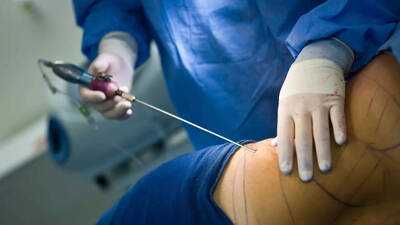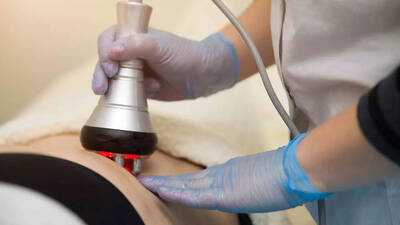Whether inspired by social media, celebrity pictures, or body ideals, more people are pursuing what they see as the “perfect” curves. Meanwhile, many opt to travel abroad for cheaper cosmetic procedures, assuming they’ll get the same results at a lower cost.
But what if those margins of safety are narrower than they seem? The mysterious case of NYPD Detective Alicia Stone , who died a week after a butt lift and liposuction procedure in Colombia, reminds us how high the stakes can be when aesthetics intersects with anatomy, technique and human error.
Stone’s death adds to a troubling list of cases linked to cosmetic procedures performed abroad. Behind the promise of quick transformations and sculpted curves lies a medical reality that is far more complex, and, at times, deadly.
Understanding how these surgeries work and why they can turn fatal offers a sobering perspective on beauty’s growing risks.

What is butt uplift / Gluteal fat transfer?
The term “butt lift” can be misleading, unlike a brachioplasty (arm lift) or face lift, gluteal fat transfer doesn’t usually tighten skin alone.
Instead, the typical procedure used is autologous fat grafting (aka “Brazilian Butt Lift” or BBL), where fat is harvested from one region (abdomen, flanks, thighs) via liposuction, purified and reinjected into the buttocks to increase volume and reshape contours.
Surgeons may combine this with a “lift” or tightening of sagging tissue, depending on the patient’s skin quality and anatomy.
The hidden dangers of butt augmentation

Fat embolism (the deadliest risk)
This is by far the most feared complication. It occurs when fat (or fat-laden fluid) inadvertently enters the bloodstream and lodges in pulmonary vessels (lungs) or even cerebral vessels, causing a pulmonary fat embolism (PFE).
A South Florida study published in Aesthetic Surgery Journal described how pressure applied to the lower buttocks after fat grafting may force free fat grafts into submuscular space and from there into injured vessels, triggering embolism. The fatal risk has led to multiple alerts from surgical societies.
Estimates say historically, fatal rates in BBL range at approximately 1 in 3,448 (0.03 %) for mortality from fat embolism, though reporting and surveillance are imperfect.
Technique & depth errors (Intramuscular injection)
When fat is injected too deep, into muscle rather than just subcutaneous tissue, the risk of vessel injury and fat entering circulation skyrockets. Many surgical safety guidelines now insist fat be placed only in the subcutaneous plane, above the gluteal fascia.
One safety advisory noted that before 2018, surgeons frequently injected fat under the muscle, a practice now deemed dangerous because it may increase risk of fat embolism via penetrating vascular structures.
High volume injection & BMI factors
The more fat injected, the greater the danger zone. In one review, injecting more than 1,000 mL per buttock was linked with a 19 % complication rate (major + minor).
Also, patients with higher BMI or more adipose stores may sequester more fat, complicating how much is safe to inject.

Surgical & post-operative complications
Beyond the embolism risk, there are many other dangers:
Infection, sepsis (especially with poor sterility or post-op care).
Fat necrosis (death of fat cells) leading to hard lumps, oil cysts, or calcifications.
Seromas or hematomas, where fluid or blood accumulates under the skin.
Wound healing problems, skin necrosis (skin death) or scarring.
Contour irregularities, asymmetry (after fat resorption or uneven injection).
Thromboembolism / DVT / deep vein clots from immobility post surgery.
Cardiovascular stress during anesthesia or fluid shifts.
One comprehensive review published in Thieme estimated the complication rate of fat grafting to the buttocks as about 7–10 %, with serious complications in under 1 %.
Butt Upliftment via gluteal fat transfer can achieve dramatic aesthetic results, but beneath the surface lie substantial risks, some of them fatal. The recent and tragic case of Detective Alicia Stone is a chilling reminder that beauty ventures into danger if technique, oversight or post-op care fail.
Note: The information provided in this article is for educational purposes only and is not intended as medical advice. Always consult with a healthcare professional before starting any new medication or treatment.
But what if those margins of safety are narrower than they seem? The mysterious case of NYPD Detective Alicia Stone , who died a week after a butt lift and liposuction procedure in Colombia, reminds us how high the stakes can be when aesthetics intersects with anatomy, technique and human error.
Stone’s death adds to a troubling list of cases linked to cosmetic procedures performed abroad. Behind the promise of quick transformations and sculpted curves lies a medical reality that is far more complex, and, at times, deadly.
Understanding how these surgeries work and why they can turn fatal offers a sobering perspective on beauty’s growing risks.
What is butt uplift / Gluteal fat transfer?
The term “butt lift” can be misleading, unlike a brachioplasty (arm lift) or face lift, gluteal fat transfer doesn’t usually tighten skin alone.
Instead, the typical procedure used is autologous fat grafting (aka “Brazilian Butt Lift” or BBL), where fat is harvested from one region (abdomen, flanks, thighs) via liposuction, purified and reinjected into the buttocks to increase volume and reshape contours.
Surgeons may combine this with a “lift” or tightening of sagging tissue, depending on the patient’s skin quality and anatomy.
The hidden dangers of butt augmentation
Fat embolism (the deadliest risk)
This is by far the most feared complication. It occurs when fat (or fat-laden fluid) inadvertently enters the bloodstream and lodges in pulmonary vessels (lungs) or even cerebral vessels, causing a pulmonary fat embolism (PFE).
A South Florida study published in Aesthetic Surgery Journal described how pressure applied to the lower buttocks after fat grafting may force free fat grafts into submuscular space and from there into injured vessels, triggering embolism. The fatal risk has led to multiple alerts from surgical societies.
Estimates say historically, fatal rates in BBL range at approximately 1 in 3,448 (0.03 %) for mortality from fat embolism, though reporting and surveillance are imperfect.
Technique & depth errors (Intramuscular injection)
When fat is injected too deep, into muscle rather than just subcutaneous tissue, the risk of vessel injury and fat entering circulation skyrockets. Many surgical safety guidelines now insist fat be placed only in the subcutaneous plane, above the gluteal fascia.
One safety advisory noted that before 2018, surgeons frequently injected fat under the muscle, a practice now deemed dangerous because it may increase risk of fat embolism via penetrating vascular structures.
High volume injection & BMI factors
The more fat injected, the greater the danger zone. In one review, injecting more than 1,000 mL per buttock was linked with a 19 % complication rate (major + minor).
Also, patients with higher BMI or more adipose stores may sequester more fat, complicating how much is safe to inject.

Surgical & post-operative complications
Beyond the embolism risk, there are many other dangers:
Infection, sepsis (especially with poor sterility or post-op care).
Fat necrosis (death of fat cells) leading to hard lumps, oil cysts, or calcifications.
Seromas or hematomas, where fluid or blood accumulates under the skin.
Wound healing problems, skin necrosis (skin death) or scarring.
Contour irregularities, asymmetry (after fat resorption or uneven injection).
Thromboembolism / DVT / deep vein clots from immobility post surgery.
Cardiovascular stress during anesthesia or fluid shifts.
One comprehensive review published in Thieme estimated the complication rate of fat grafting to the buttocks as about 7–10 %, with serious complications in under 1 %.
Butt Upliftment via gluteal fat transfer can achieve dramatic aesthetic results, but beneath the surface lie substantial risks, some of them fatal. The recent and tragic case of Detective Alicia Stone is a chilling reminder that beauty ventures into danger if technique, oversight or post-op care fail.
Note: The information provided in this article is for educational purposes only and is not intended as medical advice. Always consult with a healthcare professional before starting any new medication or treatment.
You may also like

"Election Commission constantly decreasing its credibility": Congress MP Imran Masood on SIR Phase-2

Popular 90s sitcom legend welcomes eighth child at 70 in shock baby announcement

Row erupts over ICE calling immigrants 'parasites' in a video game-style reference: 'Keep your inhumane hands off of Halo'

Uttarakhand: CM Dhami approves projects over Rs 2838.45 lakh for development and safety initiatives across districts

Shrinkflation is corporate gaslighting - manufacturers must stop insulting us





